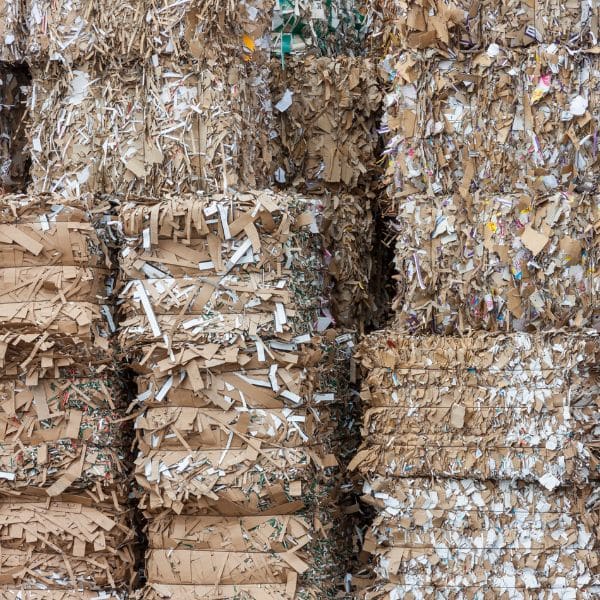
Date: March, 2024 | Author: Stuart Kawai
Sustainability in Commercial Printing
6 tips for your printing facility
In an era marked by growing environmental consciousness, businesses across industries are increasingly embracing sustainable practices to minimize their environmental impact. The commercial printing sector, with its historical association with paper consumption and chemical usage, is no exception. As the demand for printed materials continues, the need for eco-friendly printing solutions remains essential. Let’s delve into some sustainable practices for commercial printing and explore strategies for fostering environmentally concise operations.

1. Using Recyclable and Certified Paper:
Over 40% of the world’s timber is used for paper production making responsible fiber sourcing one of the most important steps towards sustainability in the commercial printing industry. Solutions include adopting recycled paper or using paper produced from responsible fiber sourcing. Materials certified by the Forest Stewardship Council (FSC) are sourced from responsibly managed forests or recycled fibers, reducing the need for virgin materials, and reducing tree loss.
By prioritizing sustainable options, printers can ensure that their operations support forest conservation and protecting a variety of life forms. When selecting materials for a print operation, numerous factors must be considered since 50% of all waste produced by businesses comes from paper. While there’s no single correct choice, prioritizing an eco-friendly solution that fits within budgeting objectives is crucial.

2. Implementing Energy-Efficient Technologies:
The integration of energy-efficient technologies plays a pivotal role in reducing the environmental impact of printing operations. From investing in high-efficiency printers to optimizing heating, ventilation, and air conditioning (HVAC) systems, print houses can significantly lower their energy consumption and carbon emissions. Additionally, leveraging renewable energy sources such as solar or wind power further enhances the sustainability of printing facilities.

3. Thorough Evaluation of Pre-press Files:
Accurate review of pre-press files is crucial for minimizing material waste in the print industry. By meticulously checking files before printing, potential errors can be caught early, preventing costly reprints and waste. This involves examining color accuracy, image resolution, and alignment to ensure quality standards are met. Advanced proofing technologies and effective communication between team members streamline this process, further reducing errors and waste.
4. Minimizing Waste through Quality Control:
Digitalization has revolutionized the printing industry, offering opportunities to minimize waste and improve efficiency. By embracing digital workflows and print-on-demand technologies, printers can reduce excess inventory and lessen the environmental impact associated with overproduction. Furthermore, implementing a quality control solution like Nix Print Pro streamlines processes, minimizes material waste, and enhances overall operational sustainability.

5. Utilizing Eco-Friendly Inks and Chemicals:
Traditional printing inks and chemicals often contain harmful volatile organic compounds (VOCs) and other pollutants harmful to environmental and human health. Transitioning to alternatives, such as naturally derived or bio-renewable inks and low-VOC solvents, reduces emissions and minimizes environmental contamination. Additionally, adopting water-based inks and UV-curable inks eliminates the need for harmful chemicals and speeds up the drying process, further enhancing sustainability. Many ink providers offer a solution that will work with recyclable materials.
A partner of Nix Sensor, Sun Chemical is ahead of the curve with sustainable practices in printing. Be sure to investigate Sun Chemical as a potential ink supplier for your operation.

6. Promoting Responsible Disposal and Recycling Practices:
Responsible disposal and recycling of printing waste is critical for a sustainable operation. Implementing recycling programs for paper, ink cartridges, and other consumables minimizes landfill waste and conserves valuable resources. Moreover, partnering with certified recycling facilities ensures that discarded materials are processed responsibly, closing the loop on the printing industry’s waste stream.

Paving the Way Towards a Greener Future
As society continues to prioritize environmental responsibility, the need for sustainable practices in commercial printing remains vital. By embracing eco-friendly strategies, print facilities can not only reduce their ecological footprint but also cultivate a competitive edge in an environmentally conscious market. From utilizing recycled materials to implementing energy-efficient technologies, every step towards sustainability in commercial printing contributes to a greener, more sustainable future for generations to come.
Check out more information on sustainability at Nix
